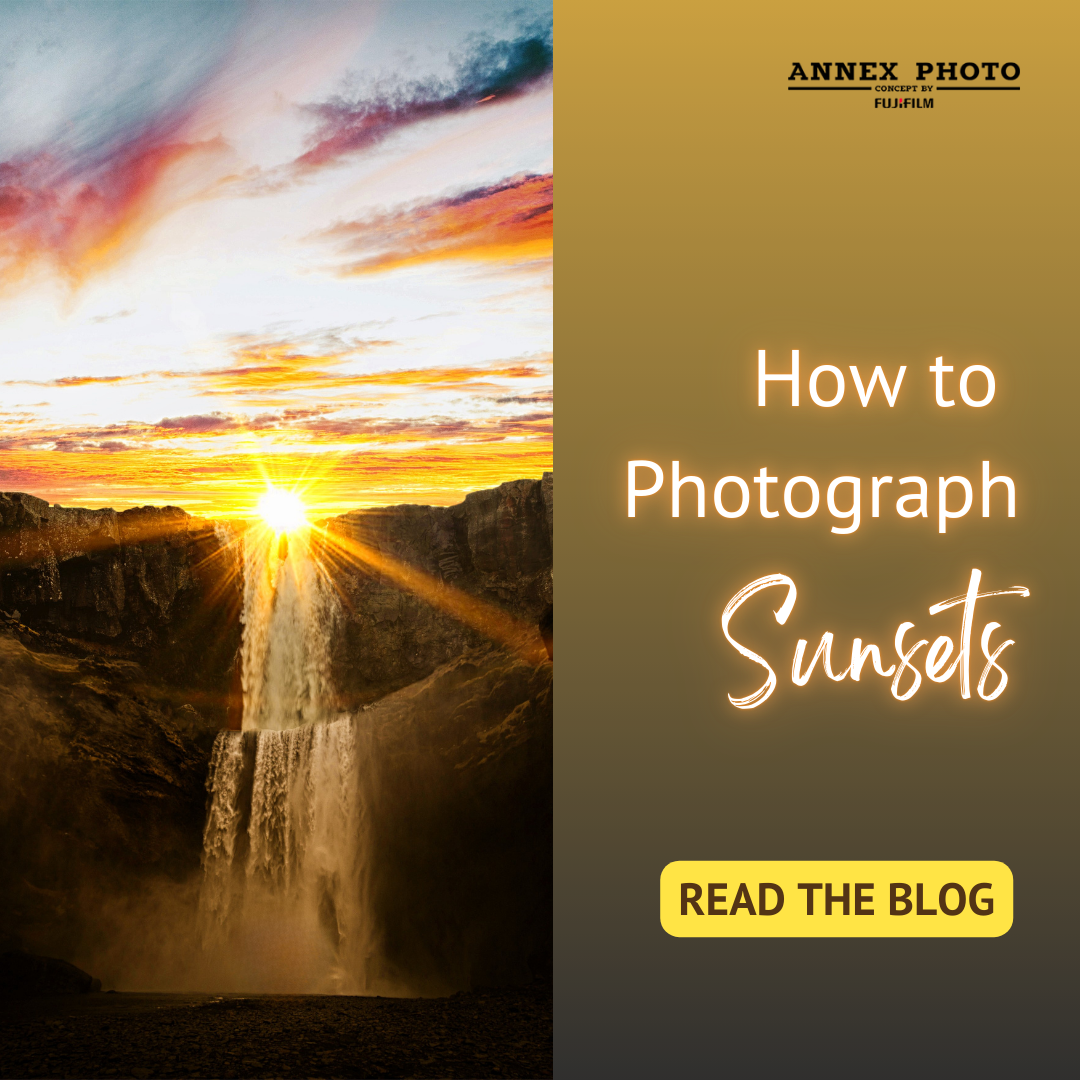All Blog Tags
From Random Posts to Strategic Sharing: Build an Authentic Online Presence Without Losing Your Creative Soul
In today’s visually driven digital world, social media has become one of the most powerful tools for photographers to showcase their work, build connections, and reach wider audiences. But the act of posting a photo online has evolved far beyond simply hitting the “share” button. It now involves strategy, intention, and engagement if you want your photography work to stand out.
Whether you're hoping to build a business, connect with other creatives, or simply share your vision with the world, understanding how to share your photography effectively on social media can help you do it with purpose – and without feeling like you're selling your soul. This guide will walk you through the key elements of making the most of your social sharing, from choosing the right platform to engaging with your audience authentically.
Know Your Goal: Why Are You Sharing?
Before you start posting your photos on social media, it’s important to understand your motivation. Why do you want to share your photography online? Are you:
- aiming to build a professional brand?
- promote your photography business?
- sell prints?
- get feedback from a creative community? or
- simply document your creative growth?
Your reason for posting will directly impact how you approach your content – everything from the platform you choose to the tone of your captions and the types of calls-to-action you include.
Without a clear goal, your social media efforts can feel scattered or unproductive. But when you understand your “why,” it becomes much easier to decide what kind of content to share, how frequently to post, and what kind of engagement to prioritize. Having a defined purpose also helps prevent burnout and keeps your content strategy aligned with your overall creative or business goals.
Choose the Right Platforms for Your Work
Not all social media platforms serve the same purpose, and as a photographer, choosing the right one can make a big difference in how your work is received.
- Instagram remains a powerhouse for photographers, with its visual-first format, stories, reels, and carousel posts allowing for creative expression and storytelling.
- If you prefer longer-lasting content or want to drive traffic to your website or blog, Pinterest can be a strong platform to share vertical images with keyword-rich descriptions that cater to users looking for inspiration, especially in niches like weddings, travel, and interiors.
- Twitter, now rebranded as X, works well for sharing updates, quick thoughts, and links to your other work, and is a great place for networking and joining real-time conversations.
- Meanwhile, TikTok has opened up new avenues for photographers to show behind-the-scenes content, tutorials, editing processes, or even just their personality, all through short-form video.
- Facebook might not be as trendy as it once was, but it remains incredibly useful for joining niche photography groups, connecting with local audiences, and maintaining a professional page.
Beyond the format differences, each platform attracts distinctly different audiences and user behaviors that can significantly impact your photography's reach and reception.
- Instagram skews younger, with Millennials and Gen Z users who expect polished, aesthetic content and engage heavily through stories and comments.
- LinkedIn, while not traditionally considered a photography platform, can be goldmine for commercial photographers targeting business clients, as its professional user base often seeks corporate headshots, event photography, and brand imagery.
- Pinterest users are predominantly female and actively search for inspiration, making it ideal for wedding, lifestyle, and home photographers whose work aligns with planning and aspirational content.
- Meanwhile, Facebook's older demographic (primarily Gen X and Baby Boomers) tends to engage more meaningfully with local businesses and family-oriented content, making it valuable for portrait photographers serving their immediate community.
- TikTok's algorithm-driven discovery means your work can go viral regardless of follower count, but its young, entertainment-focused audience may not convert to paying clients as readily as other platforms.
Understanding these demographic nuances helps you tailor not just your content, but your entire approach—from pricing strategies to the types of services you promote on each platform. The bottom line is to choose platforms that align with your goals, your intended target market, and the type of content you enjoy creating.
Optimize Your Social Media Profiles
Think of your social media profile as a digital front door to your photography. It should immediately communicate who you are, what you do, and what someone can expect by following you. A clean, professional profile picture – whether it’s a headshot or a logo – adds legitimacy to your account. Your bio should be short but clear, including your niche (such as portrait, landscape, or documentary photography), your location if relevant, and a touch of your personality.
Instagram, for example, allows you to use story highlights to showcase different facets of your photography, such as client testimonials, editing tips, or behind-the-scenes content. Tools like Linktree or Beacons can help you direct people to multiple links from one easy-to-navigate page.
Ultimately, your profile should answer the question: “Who is this photographer, and why should I follow them?”
Curate Your Feed
Creating a visually consistent feed can help you make a strong first impression, but it’s important not to let the idea of a “perfect grid” become a roadblock to actually sharing your work.
Consistency in editing style, tone, or subject matter can help define your aesthetic and make your portfolio more recognizable, but don’t be afraid to experiment. Try grouping posts by theme, colour palette, or type of shoot to keep things organized. Sharing behind-the-scenes moments, personal insights, or creative struggles in your captions adds context and depth, making your feed more than just a gallery – it becomes a story.
Instead of obsessing over every post matching perfectly, focus on creating a cohesive experience for your followers. Remember, people are drawn to authenticity more than perfection and showing the human side behind the lens often resonates more than a flawlessly curated feed.
Establish Your Posting Cadence
Regularity plays a key role in building an engaged audience. People are more likely to follow and interact with photographers who post reliably and stay active in the community. That said, consistency doesn’t mean you need to post daily. Quality always trumps quantity.
A good rhythm might be posting two to four times per week, supported by stories or short-form videos to maintain visibility without overwhelming your followers. Scheduling tools like Later, Buffer, or Meta Business Suite’s Creator Studio can help you plan ahead and reduce the stress of daily posting. It’s also helpful to batch-create content, so you have posts ready to go when life gets busy.
That said, don't feel obligated to stick to a rigid schedule if it compromises your creativity or well-being. Social media should support your photography practice, not control it. When you treat your posting schedule with flexibility and purpose, it becomes a natural extension of your creative work rather than a chore.
Use Hashtags Wisely
Hashtags are one of the easiest ways to make your content discoverable, especially on platforms like Instagram, where users frequently browse tags to find new photographers. However, it’s not just about piling on popular hashtags and hoping for the best.
A balanced hashtag strategy includes a mix of broad, medium, and niche tags. For example, #photography or #portraitphotography are widely used but highly competitive. Narrower tags like #moodyportraits or #nycstreetphotographer might have fewer posts but attract a more targeted audience.
Research hashtags relevant to your style, genre, and location, and keep a few sets saved that you can rotate between posts. Avoid using banned or irrelevant hashtags, as they can suppress your reach. Over time, track which hashtags drive engagement or followers to refine your strategy.
Engage With Others Authentically
Posting is just one part of the social media puzzle – engagement is the other. Social platforms reward interaction, and more importantly, so do your followers. Responding to comments, liking others’ posts, and joining in meaningful conversations can help you build relationships and grow your audience in a genuine way.
If someone takes the time to comment on your work, reply thoughtfully. When you admire another photographer’s post, leave a comment that shows you truly noticed their work, rather than just dropping emojis. Use direct messages to connect, not pitch.
If you consistently show up in other creators' comment sections with genuine feedback or curiosity, you’ll begin to build a network that supports and inspires you in return. A simple practice is to set aside 10 to 15 minutes a day just to engage – this can be even more valuable than constantly posting new content.
Join Photography Groups and Communities
Beyond your individual following, there’s a whole world of photography communities out there that can offer support, feedback, and inspiration. Facebook groups, Discord servers, Reddit threads, and even Slack communities exist for just about every type of photographer. These spaces are great for asking technical questions, sharing your latest shoot, or discovering new gear and techniques. Being part of a community also helps combat the isolation that can sometimes come with creative work. You might even find local meetups, photo walks, or collaborative projects to get involved in.
When joining groups, be active, respectful, and generous – offer feedback, share your experiences, and don’t be afraid to ask questions. These relationships often lead to opportunities and friendships that stretch far beyond the screen.
Include a Purposeful Call-to-Action (CTA)
Every time you share a photo, think about what you want your audience to do next. That’s where a call-to-action (CTA) comes in. It doesn’t have to be pushy – in fact, the most effective CTAs feel natural and subtle:
- You might ask a question related to the image: “Which version do you prefer – colour or black and white?”, or
- Invite viewers to share their own experiences: “Have you ever visited this location?”, or
- Guide them to more of your work: “Link in bio for the full series”
If your goal is to grow your business, a CTA might direct people to book a session or sign up for your newsletter. When done well, CTAs spark engagement, create conversations, and help your audience take the next step with you.
Share Your Story, Your Way - Connect, Engage, and Grow Your Photography through Social Media
Sharing your photography on social media doesn’t have to feel overwhelming or sales-driven. When you approach it with intention, clarity, and authenticity, it becomes an extension of your creative process – a way to tell your story, build meaningful connections, and grow as both an artist and communicator. Social media is not a one-size-fits-all tool. Choose what works for you, experiment, and give yourself permission to learn as you go. Whether you're looking to build a brand, find clients, or simply share your art with the world, your voice and vision deserve to be seen.
Ready to turn your digital photography into stunning physical prints? Contact us today to discuss custom printing options that do justice to your hard work – because your best shots deserve more than just screen time.
Share
Most Recent Posts








